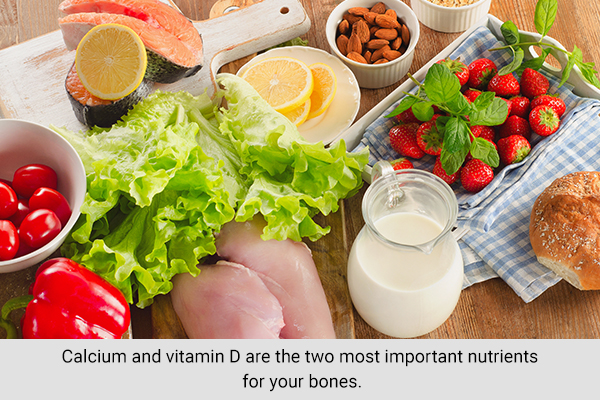Estimated reading time: 0 minutes
Maintaining strong bones as you age reduces your risk of osteoporosis and its complications, such as excruciating vertebral compression fractures. Try these eleven suggestions to protect your bones and improve your overall health.
Perform weight-bearing activities.
Weight-bearing exercises are an excellent way to construct and preserve bone mass.
Take a stroll or exercise.
You determine the frequency and speed of your walks and jogs. Your physician or a certified personal trainer can advise you on the best course of action. Exercise for 20 to 30 minutes three to four times per week is typically advised.
Climb the stairs, perform bench steps, or engage in leaping exercises.
These activities are typically more strenuous than walking and sprinting. They are fantastic for bone health and aerobic conditioning.
Perform resistance or strength training.
Two to three times per week, lifting, pushing, and dragging weights (or resistance bands) is beneficial for your bones and promotes overall health.
Consult with your healthcare provider to determine which exercises are optimal for individuals with or at risk for osteoporosis.
Change your lifestyle.
Two changes in lifestyle can significantly enhance bone health:
Quit smoking immediately.
Tobacco use may be a significant risk factor for bone loss. Moreover, it has been demonstrated that smokers have poorer balance than nonsmokers, which increases the likelihood of stumbling and breaking a bone.
Avoid drinking excessive amounts of alcohol.
Alcohol abuse impairs the body’s ability to assimilate and regulate calcium, vitamin D, and hormones. It may also increase your risk of bone density loss and bone fracture.
Consume a lot of calcium.
Calcium contributes to bone health and prevents osteoporosis. Each day, adults should consume 1,000 to 1,200 milligrammes of calcium.
Breakfast should consist of fortified muesli.
One package of unsweetened instant oatmeal contains greater than 100 mg of calcium 4, which is roughly 10% of the daily recommended intake. Choose the option with improved nutrition and no added sugar. To incorporate calcium into your muesli, combine it with whole milk, almond milk, or kefir.
Consider purchasing tinned seafood.
Salmon, sardines and crustaceans are all high in protein and calcium. Additionally, salmon is rich in omega-3 fatty acids.
Increase your consumption of nuts, legumes, and greens.
Almonds, walnuts, and pistachios are very rich in calcium. Keep a few handfuls in a small plastic container for snacking purposes. White beans and traditional baked beans are also rich in calcium. Consume them alone or in a low-sodium curry. Additionally, leafy leaves are rich in calcium. The choices of collard greens, kale, and bok choy are all superb.
Consider a calcium supplement.
If your diet alone is insufficient to meet your daily calcium needs, speak with your doctor or apothecary about adding calcium supplements to your daily routine.
Increase your vitamin D consumption.
Vitamin D helps your body retain nutrients that strengthen bones. If you do not consume enough vitamin D, your bones may deteriorate, increasing your risk of fracture.
Consume cereal, eggs, and oily fish (such as salmon) fortified with vitamin D.
All of these foods contain the daily recommended level of vitamin D, which is 600 international units (IU) (or 800 IU for those over 70).
Daily sun exposure of 5 to 10 minutes is recommended.
Spending time in the sun allows the body to assimilate vitamin D naturally.
Consider implementing any or all of the following recommendations. They may contribute to maintaining bone health and preventing osteoporosis.
Related-
Know more about Ayurvedic Spinal Disk & Radiculopathy Treatments.
GET IN TOUCH


Recent comments